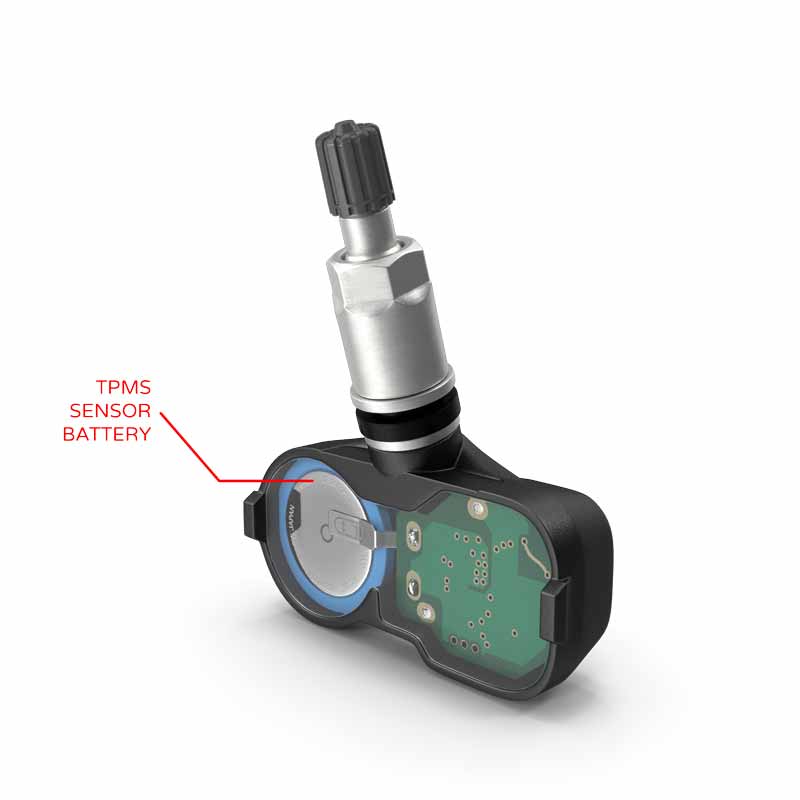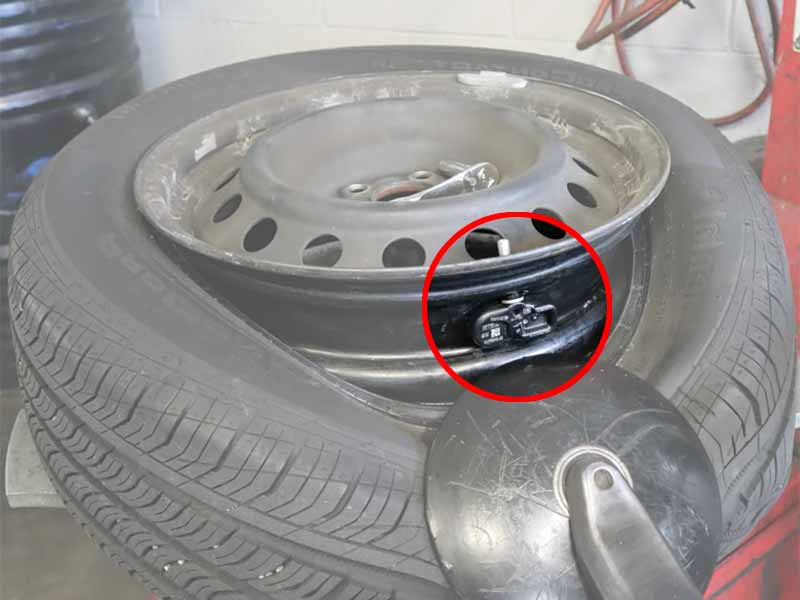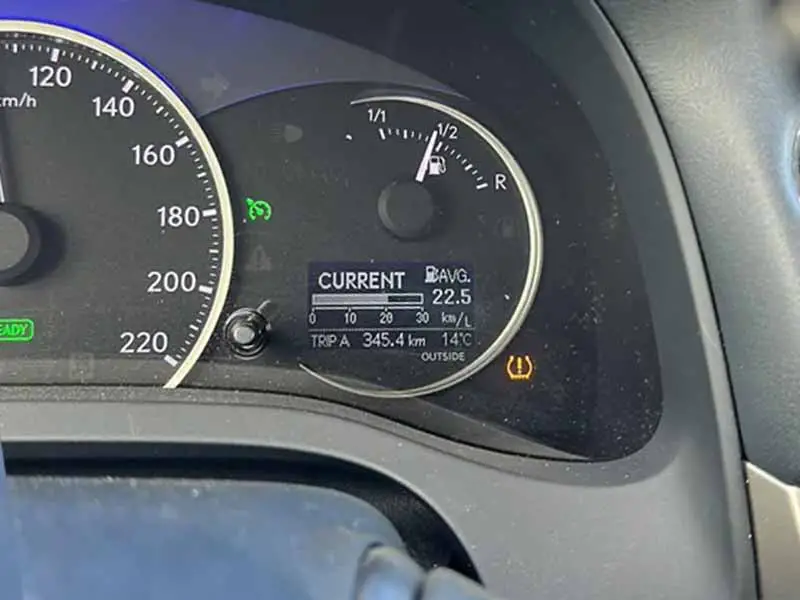When you’re cruising down the highway, the last thing you want to see is a TPMS warning light blinking on your dashboard. But what if that light is warning you about something that could affect not only the performance of your vehicle but also your safety on the road? Your tire pressure monitoring system (TPMS) is crucial, and understanding its functions and malfunctions is something every driver should know.
TPMS Malfunction
A TPMS malfunction means that the system designed to monitor the air pressure inside the tires is not working correctly. This malfunction can lead to inaccurate tire pressure readings, making it difficult to know if the tires are inflated properly, which could compromise vehicle safety.
In this article, we’ll explore what a tire pressure monitoring system is, common causes of TPMS system malfunctions, how to fix these issues, and whether you can drive with a malfunctioning tire pressure sensor. We’ll break down these complex topics into easily understandable sections, so you can take control of your vehicle’s health and drive with confidence.
Let’s take a closer look.

What Does TPMS Malfunction Mean?
You’re driving along, and suddenly, a little light on your dashboard comes on. It’s the TPMS light, and it’s there to tell you something’s not quite right with your Tire Pressure Monitoring System (TPMS). But what does that really mean? Let’s break it down.
What is TPMS Anyway?
TPMS is like your car’s way of keeping an eye on the tires. It makes sure the air pressure in your tires is just right. Not too much, not too little. The sensors in the tires keep track of the pressure and if something’s off, the TPMS warning light on the dashboard will tell you about it.
Signs of TPMS Sensor Malfunction
A sensor that is not functioning properly can mean different things. Here’s what it might be:
- Faulty TPMS Sensor: Sometimes, the sensor inside the tire that checks the air pressure can go bad.
- Interference with the Signal: Other electronics in the car or outside might mess with the signals from the sensors to the computer.
- Low Battery in a Tire Pressure Sensor: Like other gadgets, sensors have batteries. When they run low, they might not work right.
- Something’s Up with the Tires: It might not be the TPMS itself but the tires. Maybe one’s got a slow leak or there’s a tire failure.
Why You Should Care
The TPMS system is there to help keep you safe. If it’s not working right, you might not know if your tires are losing air. And driving with a tire that doesn’t have enough air can lead to big problems like:
- Tire Wear: Tires wear out quicker if the pressure isn’t right.
- Bad Gas Mileage: Your car has to work harder, so you’ll end up spending more on gas.
- Trouble Steering: Ever try riding a bike with a flat tire? It’s hard to steer, and the same goes for your car.
- Tire Failure: Proper inflation according to your owner’s manual will help prevent a tire failure before it has a chance to occur.

Causes of TPMS Malfunction
When that TPMS light on your dashboard comes on, you know something’s wrong. But what exactly is causing the trouble? Well, it could be a few different things. Let’s dig into the common reasons why TPMS might not be working the way it should.
1. Faulty TPMS Sensors
Lifespan of a TPMS Sensor
- How Long They Last: TPMS sensors are strong, but they don’t last forever. They usually last around 5 to 10 years, depending on how you drive and take care of your car.
- What Can Go Wrong: Sometimes a sensor might just stop working, or it could be damaged by rough roads.
Symptoms of a Faulty Sensor
- Inconsistent Readings: The TPMS light might flicker or stay on when it shouldn’t.
- No Warning at All: Even if a tire is low on air, a bad sensor might not tell the system, so no warning light comes on.
2. Low Tire Pressure & Underinflated Tire
How TPMS Responds to Low Tire Pressure
- Sensors Keeping Watch: When the air in a tire drops below the right level, the sensors let the TPMS know.
- Why It Matters: Underinflated tires can wear out faster and make driving more dangerous.
Effects of Underinflated Tire on a TPMS System
- False Alarms: Sometimes, changes in weather can cause the pressure to drop just a little, and the TPMS might think something’s wrong.
- Real Problems Missed: If the TPMS is confused by small pressure changes, it might miss a real problem like a leak.
3. Problems with Valve Stem
The Role of the Valve Stem in Tire Pressure Sensors
- What It Does: The valve stem is like a little door that lets air in or out of the tire.
- How It Works with a TPMS Sensor: It’s connected to the sensor, so if something’s wrong with the stem, the sensor might not get the right information.
Common Issues and Their Effects on Pressure Monitoring
- Leaks: A leaky valve stem might let air out slowly, causing low tire pressure.
- Damage: If the stem is damaged, it might not connect to the sensor properly.
4. TPMS Module Issues
Function of the TPMS Module
- Heart of the System: The TPMS module is like the brain of the tire pressure monitoring system. It takes the information from the sensors and decides if the TPMS warning light should come on.
- What Can Go Wrong: It might get confused by other electronic signals or just break down over time.
How It Can Malfunction
- Signal Interference: The module might lose the ability to communicate with a particular TPMS sensor due to other electronics broadcasting a signal in the same frequency.
- Total Breakdown: If the module stops working altogether, the whole TPMS might stop working.
Other Causes
- Improper Use of TPMS Service Tool: Sometimes, using the wrong tools to fix or check the TPMS can cause problems.
- Impact of Tire Pressure Fluctuations: Changes in weather or how you drive can confuse the TPMS.

Can You Drive with a TPMS Malfunction and How to Fix It?
When that TPMS light comes on, a lot of people wonder if it’s safe to keep driving. The short answer is, you probably can for a little while, but it’s best to check things out as soon as possible. Here’s why.
Dangers of Driving with TPMS Malfunction
- Unseen Problems: If the TPMS isn’t working right, you might not know if a tire is losing air.
- Worn-Out Tires: Tires that aren’t inflated properly can wear out quicker.
- Harder Steering: Tires without the right air pressure can make steering tough.
Steps to Fix TPMS Problems
Checking Tire Pressure
- Doing It Yourself: You can use a tire pressure gauge to check the air pressure in your tires. Most cars have the correct pressure listed on a sticker inside the driver’s door.
- Going to a Professional: If you’re not sure what to do, it’s a good idea to take your car to a professional who knows how to check and fix tire pressures.
Inspecting and Replacing the TPMS Sensor
- Visual Check: Look at the valve stems and sensors if you can. Any damage?
- Getting Help: Sometimes it’s best to let a pro handle it. They’ll have the tools and know-how to find and fix the problem.
TPMS Service Tool Usage
- What It Is: This is a special tool that professionals use to test and reset the TPMS.
- Why You Might Need It: If there’s a problem with the TPMS module or the sensors, this tool can help find it.
When to Seek Professional Help
- If You’re Not Sure: Better safe than sorry. If you don’t know what’s going on, get a pro to look at it.
- Complex Problems: Some things, like replacing a sensor or fixing the TPMS module, are best left to those who know how to handle them.
Making the Right Decision
Driving with a TPMS malfunction isn’t the end of the world, but it’s not something to ignore either. It’s a sign that something might be wrong with your tires or the system that keeps an eye on them.
Taking the right steps to figure out the problem can help you take care of small issues before they become big headaches. Whether you handle it yourself or get help from a professional, taking care of your TPMS means taking care of your car and everyone in it.
Resources
Below are some links you may find helpful when learning about tires
- TPMS light on? What it means and what you need to do – Bridgestone
- What you should do when a tire-pressure light flashes – Car and Driver
Final Thoughts
Understanding the Tire Pressure Monitoring System (TPMS) in your vehicle is more than a matter of mechanics; it’s about ensuring a safe and efficient driving experience. From recognizing what a TPMS malfunction means and the potential dangers of driving with one, to practical steps on fixing common problems, this article has armed you with the knowledge needed to respond appropriately.
Remember, the TPMS isn’t just a random warning light on your dashboard. It’s a critical part of your vehicle’s overall health, influencing everything from fuel efficiency to tire longevity. Whether you’re handling minor issues yourself or seeking professional help, staying informed about your TPMS means taking care of your car and everyone inside it.
Good luck and happy motoring.





